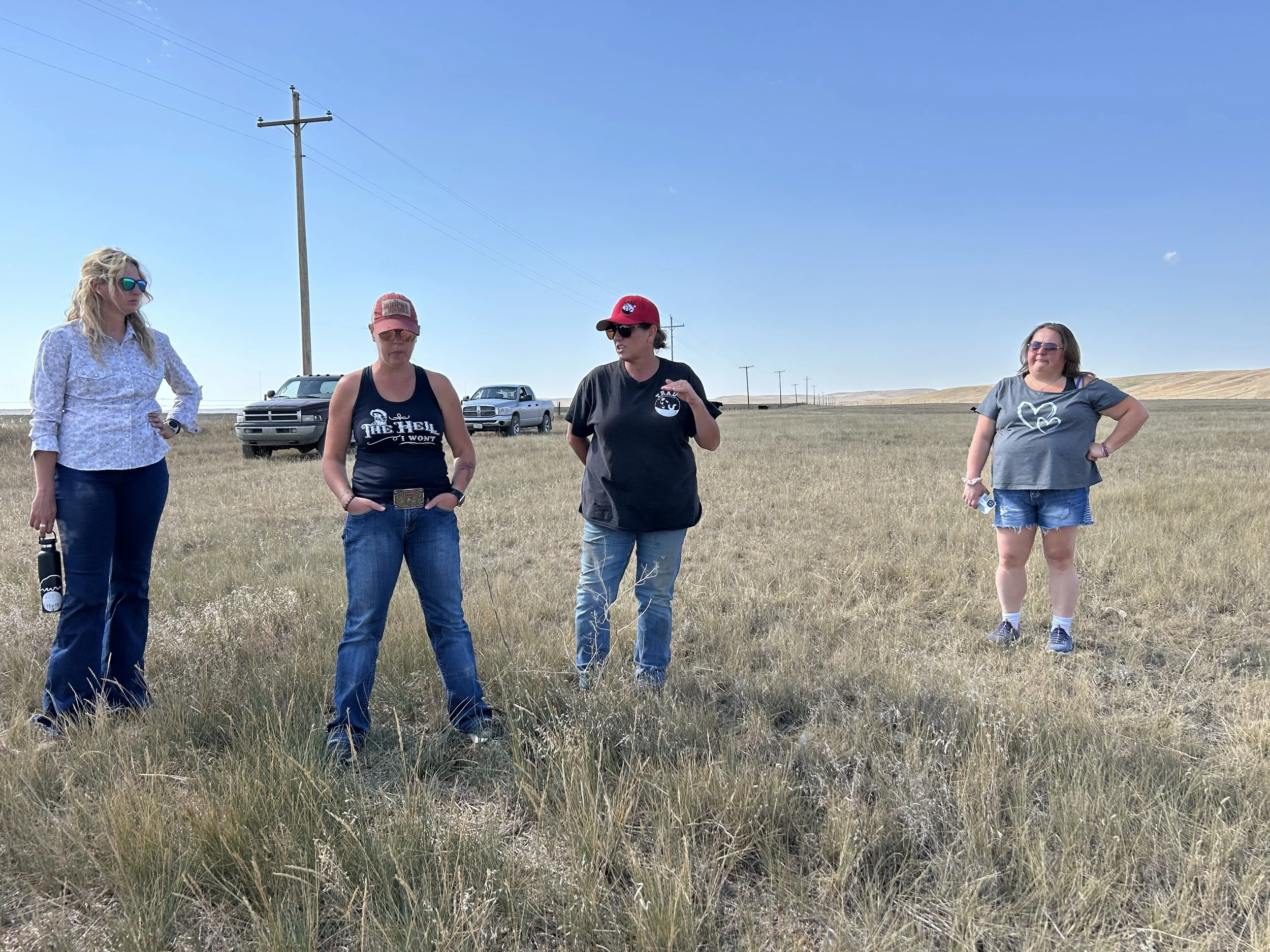Drought Improvements During a Drought
A couple of rancher friends called a couple of months ago to ask if I would host a drought mitigation and riparian workshop at my place.
My first response was that my creeks are completely dry so a riparian workshop would not work.
They asked again.
I said no, I have too many other projects going on.
They asked a third time.
Okay, but only if they would pay a compost and vermicast expert to speak to participants.
They jumped on that idea.
They invited my peers to come inspect my ranch last week.
The angst I felt was almost unbearable.
My neighbors would see my crunchy, dull brown pastures.
They would know my lawn is drying up because I won’t use my precious, declining spring water to sprinkle it.
They would see that I haven’t finished the projects I promised myself I would finish before now.
Fortunately, my mom agreed to manage lunch preparations and my partner, Erik, agreed to run the grill.
At least the burgers were amazing.
Also amazing was the expanded perspective the participants shared.
Yes, the grass is dry, but they could see that the amount of bare ground between plants is shrinking.
Under that ground cover, the temperature is cooler and microbes are happy so the grass grows taller.
My little piles of manure on the barren, rocky hillsides are catching rain, feeding soil microbes and growing grass, too.
While the edges beyond the mounds are bare, the black soil in the mounds holds grass that is still tall and green.
The vermicast and compost expert, Roxanne Doerksen, explained this phenomenon by saying our Montana soils often need four to five inches of compost on them and that soil microbes stay right where they are happy.
Microbes won’t migrate between happy habitats.
I better fill in the spaces between the mounds with my endless supply of corral manure.
After lunch, we meandered to the bone dry, deeply-cut, curvy creek bed.
I had not noticed that the creek is already trying to fill in those deep cuts.
Short toes of soil and grass grow from the inside of the creek curves.
All I need to do now is slow the flow so the grass can catch the sediment and raise the bottom of the creek, little by little.
I can build many low dams along narrow portions of creek to slow the velocity of water – when or if water ever comes again.
Riparian experts call them beaver dam analogs – short, porous dams that imitate beaver dams, but they are made from old branches or rocks.
Even better, riparian expert Autumn Christenson who leads the Montana Conservation Corp., will bring laborers to build these short, porous dams.
Even better, they will build them for free.
Now they were talking about my kind of project.
I need to provide the material – dry brush or branches or rocks.
It turns out that my friend, LeAnn, needs to trim her trees.
Hauling her branches to my creek is far easier and smarter than logging the Graham Ranch National Forest.
After all, that entire forest of 11 trees is all that stands between my house and bitterly cold north winds in January.
I also have access to lots of rocks.
Round rocks pop up in my alfalfa field at the east end of the ranch every year.
Flat rocks grow out of the pasture on the west end of the ranch.
Big round rocks will slow the water flow. The flat rocks provide an apron of protection from erosion where the water flows over the round rocks.
The simplicity is elegant.
I paid for this education with my angst.
I got a screaming deal.
